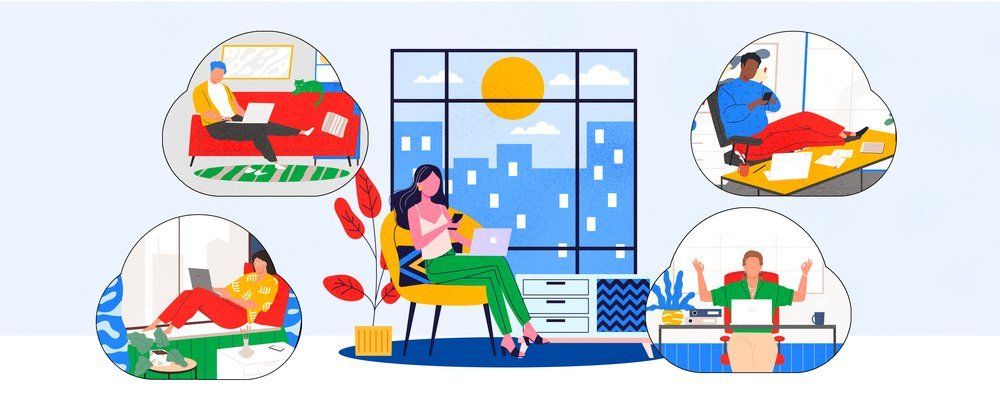

 I was at a local big-box electronics retailer the other day and noticed there is still a big deal being made about the iPad. Adults were swiping their fingers across the screen saying “Well, this could be very handy around the house.” Senior citizens were flipping it around saying “Geeze Louise! Look at this hotsy-totsy thing-a-mabob!” Teens were texting friends that were standing right next to them saying “OMG DAT IPAD’S BANGIN IT 2M2H! IWO!”
I was at a local big-box electronics retailer the other day and noticed there is still a big deal being made about the iPad. Adults were swiping their fingers across the screen saying “Well, this could be very handy around the house.” Senior citizens were flipping it around saying “Geeze Louise! Look at this hotsy-totsy thing-a-mabob!” Teens were texting friends that were standing right next to them saying “OMG DAT IPAD’S BANGIN IT 2M2H! IWO!”
The first thing that came to mind: apparently I am only capable of understanding people who fall within my own age group.
The second thing that came to mind: The iPad has been available for over a year now, and yet there is not a single successful competitor to the product. It’s not due to lack of attempts. Motorola released the Xoom tablet a few months ago, the Dell Streak is available, Samsung’s Galaxy series is in stores…and nobody is buying them. Tablets will be the primary way we’ll be using the Internet within the next few years, but it seems that Apple is holding all the cards at this point and it’s holding up progress. It’s not that Apple is doing this on purpose…it just so happens that they have a number of factors that are working in their favor at the moment.
When thinking about tablets, I like to compare a tablet to a microwave oven. Just as you use the microwave to heat up your leftover pizza quickly, you would use a tablet to get information off of the Internet quickly. If you think about it, what do you use more often in your kitchen, your microwave or your oven? Apple has perfected the quick and snazzy interface that lets you see the web quickly, and because of this “microwave” quality tablets completely fill a needed niche– unlike the netbook.
If you remember, when netbooks were introduced prices were in the $500 range and were honestly no better than a standard laptop. In many ways they were worse. Netbooks came with the nearly decade old Windows XP (mostly because their wimpy Intel Atom processors couldn’t handle anything more modern), their small awkward screens made it difficult to view websites without scrolling all over the place, they had cramped keyboards which made typing difficult…who in their right mind would buy into an experience like that? Lots of people it turns out, as netbooks outsold laptops by a huge margin in 2009. What was selling these torturous machines? Three factors: they were cheap, portable, and had a long battery life. These are the main things that consumers previously did not have available to them yet desperately wanted. Therefore, netbooks were purchased in droves.
In 2010 Apple introduced the iPad, and immediately millions of people… started laughing . Apple decided to stay out of the whole netbook quagmire and headed in a different direction. It took its hyper-popular iPhone and blew up the screen to nearly 10 inches. After the giggles over the name died down, serious business began as consumers caught wind of the “cheap-portable-battery life” features, not to mention it could turn on instantly and offered fairly snappy performance. The iPad became a hit and single-handedly killed netbook sales , ending the whole netbook fad in short order. Manufacturers had an “Ohhhhh…so THAT’S what you wanted…” moment and began to design competing tablets.
Apple’s advantage is it is a software AND hardware manufacturer, so it had the proven iOS from their iPhone to run on the iPad. Other companies don’t have that advantage (well, except for HP , but they’ve been pretty secretive lately). Windows is not suitable for low power tablet, and Microsoft is once again caught with it’s pants down (in the same way it was with smartphones and music players). Steve Ballmer is basically saying “Yeah…the next version of Windows will be tablet compatible. We’ll get to it sometime in the next couple of years and be shut out of the market again for arriving too late.” Competitors had to go open source, and Google’s Android was about the only viable choice. The problem is Android had been designed for smartphones with small 4″ screens. Early adopters like Samsung ended up having to sell 7″ $700 tablets with a non-optimized interface, and you can guess how that panned out. Google helped things along by developing Android 3.0 “Honeycomb” as a tablet-only operating system. So, for now, Honeycomb is the OS choice if you want a competing tablet. It’s user friendly, slick looking, and lots of apps to fuel whatever addictions you have. Problem solved.
So, why aren’t we all using tablets yet? Everything is in place for consumers to rip them off the shelves. They have everything that made netbooks popular, and more:
Small form factor: check
Long battery life: check
Speedy: check
Cost: che….oooooo…wait a minute
That last one is a killer. Being priced in the $600-$800 range, it’s the one thing preventing us from putting tablets on our shopping list. Apple is supposed to be a “premium” hardware vendor, so its products are always in the higher end of the price range. Yet, the iPad priced at $499 is the lowest cost 10″ tablet on the market. Using this logic, “every-man” tablets should be in the $250-$300 range, but instead are being priced out of the market. What may surprise you is prices may be staying high on purpose.
Desktops, laptops, and netbooks are all suffering from discount cancer. HP, Dell, Toshiba, and others keep lowering build quality and cutting profits to shave dollars off retail prices. The PC market that used to have products with an average retail of $2000 is now in the $400 range. Netbooks, with paper thin margins as it is, plunged into the sub-$300 range. Manufacturers are having difficulty making a profit at these prices, and is exactly why you see modern computers covered in trial software, advertisements, and offers of service agreements– they’re selling the hardware at costs and hoping to make money after-the-fact. They want to prevent this from happening to tablets. Therefore the prices are being set artificially high for now. With rapidly plunging prices being associated with junk products, nobody wants to be the first to dip their toes in the bargain bin.
Things are looking up though. I see 2012 as the Year of the Tablet (<–official prediction). The tablet pricing sweet spot seems to be around $250-$300 for a base model. When we get to that point, they’re going to be in people’s cart’s pretty quickly. The trick is going to be convincing consumers that a tablet in that price range is a quality product. My bets are on Asus to start things off (their new Transformer line is making waves with $400 pricing. They’re also the ones that started whole netbook craze). Once tablet computing takes hold, it’s probably going to be here to stay. We’ve already assimilated tablet computing into our lives through smartphones (which are in effect tiny tablets) so we’re already accepting of touch-screen technology. This is just the next logical step, and it’s a good one. The touch interface is the most natural and intuitive of all, and will open technology to a whole new class of people who were previously intimidated by computers. I hear people say “I can’t use that darned mouse” all the time, but “I can’t use my darned finger”…not so much.

